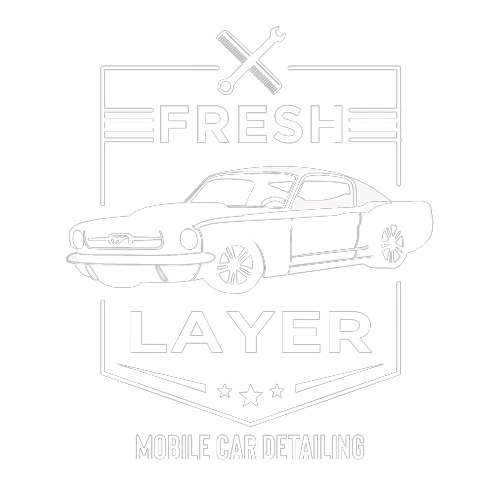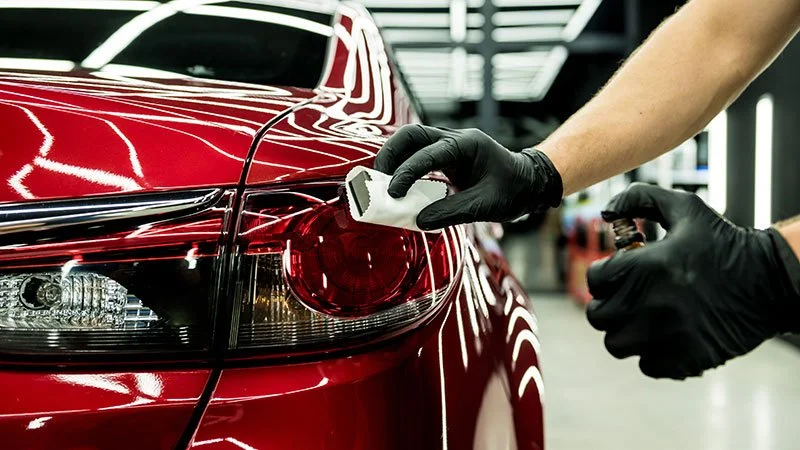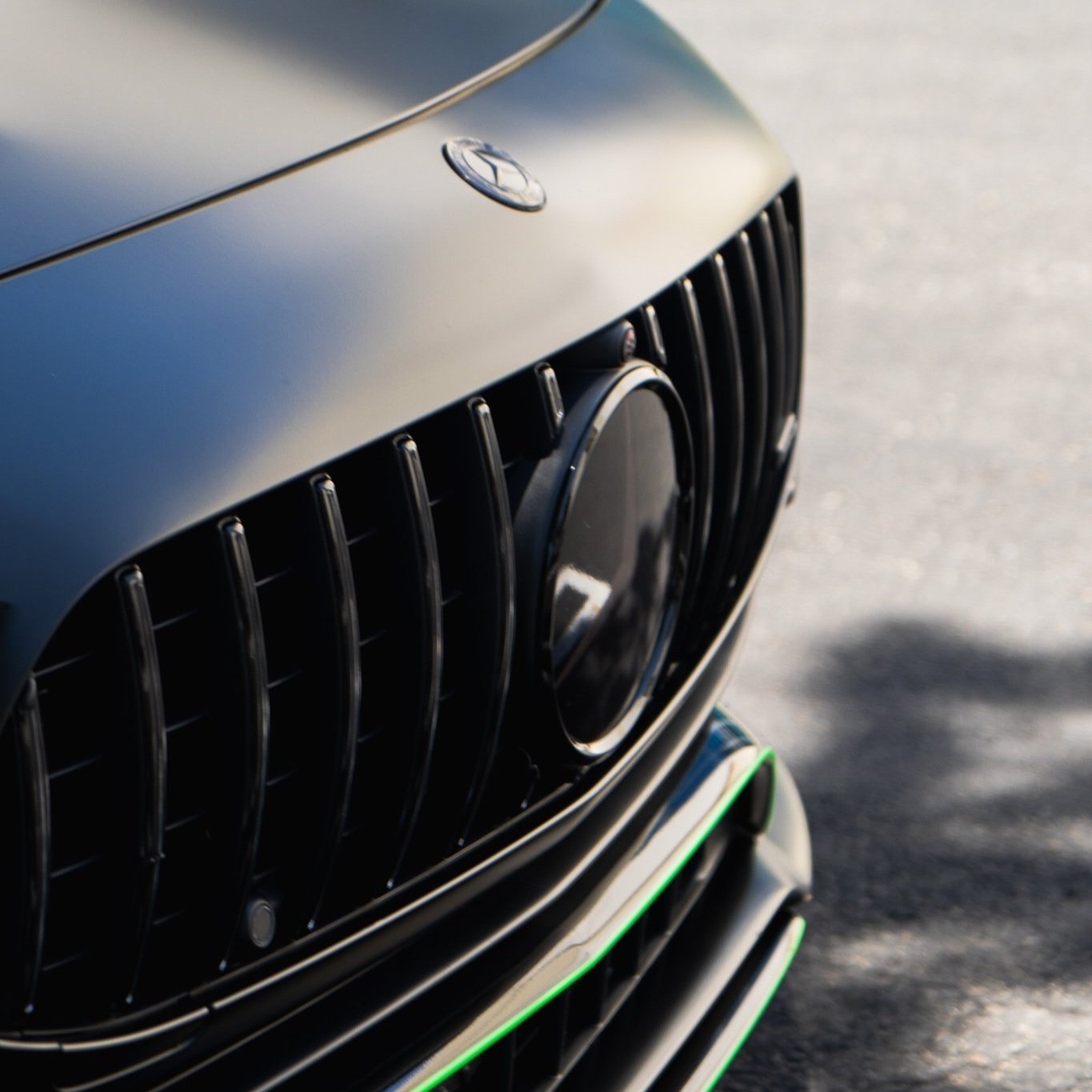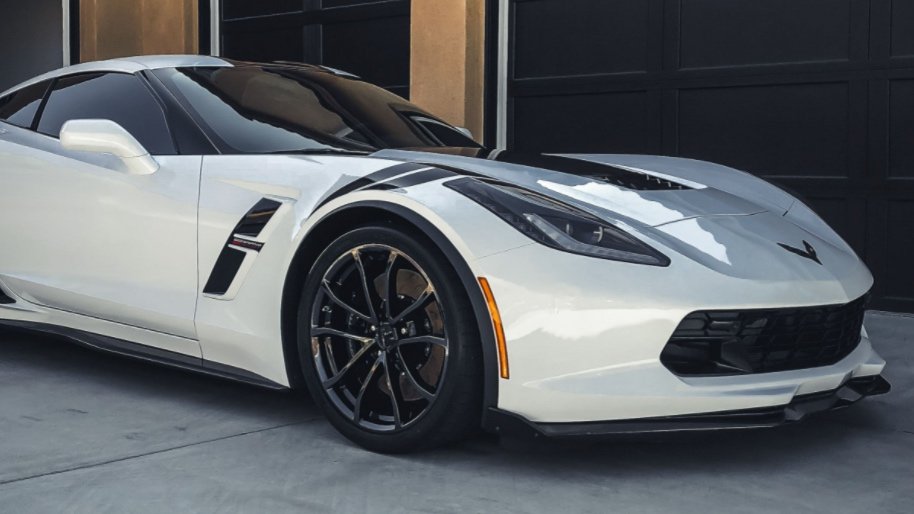Ceramic Coating: Is It Worth It For New Cars? Expert Guide
Ceramic coating has become one of the most discussed topics among car enthusiasts and professionals.
Touted as a revolutionary product, it promises to protect your car’s paint, deliver an unmatched shine, and make cleaning a breeze. But is it truly worth the investment?
This blog explores ceramic coating in depth, breaking down its benefits, costs, application process, and whether it’s a wise choice for your vehicle.
Is Ceramic Coating the Right Investment for Your New Car?
In this guide, we'll dive deep into whether ceramic coating is worth it for new cars. We'll explore costs, timing, benefits, and whether to DIY or hire a professional.
By the end, you'll have a clear understanding of how ceramic coating works, its pros and cons, and whether it's the right choice for your new ride in 2025.
Fresh-Layer Company can help you choose the best option for your vehicle before making an appointment.
Ceramic coating has emerged as a revolutionary product in the automotive industry, for car paint protection offering unparalleled protection for car exteriors.
best Ceramic coating in san Diego
What is Ceramic Coating?
Ceramic coating is a liquid polymer applied to a vehicle's exterior. Once cured, it bonds with the paint to create a protective layer. This layer offers durability, hydrophobic properties, and a glossy finish, acting as a barrier against contaminants like dirt, UV rays, and minor scratches.
Key Features of Ceramic Coating:
Durability: Lasts years, unlike traditional waxes.
Hydrophobic Effect: Repels water, making cleaning easier.
Shine: Provides a mirror-like finish for a showroom appearance.
Protection: Guards against oxidation, UV damage, and minor abrasions.
When is the Best Time to Ceramic Coat a New Car?
Ceramic coating is most effective when applied to a perfectly clean and blemish-free surface. Since a new car usually has minimal imperfections, it's an ideal time for coating. However, there are a few things to consider:
Paint Curing Period: Manufacturers typically recommend waiting 1-3 weeks for the paint to fully cure before applying a ceramic coating. This waiting period ensures that the paint has had time to harden, preventing any issues during the coating process.
Post-Purchase Timing: Ideally, you should apply the ceramic coating soon after purchasing your new car, once the curing period is complete. This will help shield your car's paint from environmental contaminants right from the start.
Do You Need Ceramic Coating?
Find the right protection package for your vehicle!
1. How often do you park outdoors?
2. Do you want a low-maintenance solution?
3. How long do you plan to keep your vehicle?
Understanding Ceramic Coating
Ceramic coating represents a significant advancement in automotive paint protection technology.
Essentially, it is a liquid polymer that, when applied to the exterior of a vehicle, chemically bonds with the factory paint to create a layer of protection.
This protective coating is not only durable but also provides a permanent or semi-permanent bond with the car's paint, meaning it does not wash away or break down over time and can only be removed through abrasion.
The key benefits of applying a ceramic coat to a new car include enhanced protection against various environmental contaminants such as bird droppings, tree sap, UV rays, and acid rain.
These elements can damage a car's paint over time, leading to fading, oxidation, or even corrosion.
Ceramic coatings add a hard layer over the paint, significantly reducing the risk of such damage.
Furthermore, the coating creates a hydrophobic (water-repellent) surface, making it easier to clean the car as water beads up and rolls off, taking dirt and grime with it.
Benefits of Ceramic Coating
A Smart Choice for Your Vehicle
Superior Paint Protection
- UV Rays: Prevents paint fading caused by prolonged sun exposure.
- Chemical Resistance: Shields against acidic contaminants like bird droppings and tree sap.
- Scratch Resistance: Reduces the likelihood of swirl marks and minor scratches.
Long-Lasting Shine
- Provides a durable, high-gloss finish.
- Keeps your car looking brand new for years.
Easy Maintenance
- Hydrophobic properties repel water and contaminants.
- Reduces the need for frequent washing and waxing.
Enhanced Resale Value
- Preserves the paint for a better appearance.
- Increases buyer confidence in the vehicle’s condition.
Cost-Effective Over Time
- Higher upfront cost is offset by long-term durability.
- Reduces maintenance and upkeep expenses.
Best Ceramic coating in 2025
How Much Does New Car Ceramic Coating Cost?
The cost of ceramic coating can vary widely, depending on the quality of the product and whether you opt for a professional or DIY application. Here’s a cost-benefit breakdown:
Professional Application Cost: Professional ceramic coatings can range from $800 to $2,500 depending on the size of the vehicle, number of layers applied, and the reputation of the installer.
DIY Application Cost: DIY kits are significantly cheaper, usually between $50 to $150, but require a lot of time and effort to apply correctly.
Benefits of Ceramic Coating:
Protection from UV Rays: Ceramic coating protects the paint from fading due to UV exposure.
Hydrophobic Properties: The coating makes your car incredibly easy to wash, with water and dirt simply beading off the surface.
Long-Term Value: With proper maintenance, ceramic coatings can last 3-7 years, making it a valuable long-term investment compared to regular waxing, which requires reapplication every few months.
The Downsides to Consider about Ceramic Coating
Downsides to Consider About Ceramic Coating
Make an Informed Decision for Your Vehicle
Cost
- Initial investment is higher than traditional waxing or sealants.
- Premium materials and labor-intensive application add to the cost.
- May not suit individuals on a tight budget.
Need for Professional Application
- Requires precision and expertise for proper application.
- Preparation and application must ensure even coverage and bonding.
- Mistakes can lead to unsatisfactory results.
- Professional services add to overall costs.
Unrealistic Expectations
- Ceramic coating reduces maintenance but doesn’t eliminate it.
- Does not make the car completely invulnerable to damage.
- Requires regular upkeep for optimal performance.
Longevity and Reapplication
- Ceramic coatings are not permanent and wear down over time.
- Require reapplication to maintain protective properties.
- Longevity depends on product quality and maintenance.
- Represents a long-term commitment rather than a one-time solution.
While ceramic coating offers numerous benefits for car protection and maintenance, it's important to consider a few potential downsides before deciding to invest in this treatment.
Addressing these concerns can help car owners make a more informed decision about whether ceramic coating is the right choice for their vehicle.
Cost
One of the most significant considerations for many car owners is the cost associated with ceramic coating.
The initial investment can be considerably higher than traditional waxing or sealant applications.
This is due in part to the quality of the materials used and the labor-intensive process required for proper application.
High-quality ceramic coatings, coupled with professional application, ensure durability and effectiveness but also come with a premium price tag. For individuals on a tight budget, the cost may be a prohibitive factor.
Need for Professional Application
Ceramic coating requires a high level of precision and expertise for application, making it a task best suited for professionals.
The process involves thorough cleaning and preparation of the car’s surface, followed by the careful application of the coating to ensure even coverage and optimal bonding.
Mistakes during application can lead to unsatisfactory results, such as streaking or incomplete protection. This necessity for professional service adds to the overall cost and may not be convenient for everyone.
Unrealistic Expectations
There can sometimes be a misconception that once a car is ceramic coated, it requires no further maintenance or care.
While ceramic coating significantly reduces the need for frequent cleaning and provides superior protection against environmental elements, it does not make the car invulnerable.
Regular maintenance, albeit less frequent, is still necessary to keep the car in top condition. Setting realistic expectations about the capabilities and limitations of ceramic coating is crucial for satisfaction.
Longevity and Reapplication
Although ceramic coatings are designed to last several years, they are not permanent. Over time, the coating will wear down and require reapplication to maintain its protective properties.
The longevity of the coating depends on various factors, including the quality of the product, the conditions the vehicle is exposed to, and how well the car is maintained.
Understanding that ceramic coating is a long-term commitment rather than a one-time solution is important for potential buyers.
Does Ceramic Coating Void New Car Warranty?
One common concern among car owners is whether ceramic coating will void the car's warranty.
The answer is no, ceramic coating itself will not void your warranty.
However, improper application that causes damage to your paint may lead to warranty complications.
It’s crucial to follow manufacturer guidelines or hire a certified installer to ensure no issues arise with your vehicle's warranty.
Ceramic Coating vs. Traditional Waxing
When considering options for protecting a car’s paint, car owners typically weigh the benefits of ceramic coating against traditional waxing. Understanding the differences in durability, protection, and cost over time can help in making an informed decision.
Ceramic Coating vs. Traditional Waxing
Key Differences at a Glance
Durability
- Ceramic Coating: Lasts several years under optimal conditions.
- Ceramic Coating: Chemically bonds with paint to form a hard protective layer.
- Traditional Waxing: Lasts only a few months.
- Traditional Waxing: Wears away quickly due to environmental factors.
Protection
- Ceramic Coating: Shields against UV rays, acid rain, bird droppings, and road salts.
- Ceramic Coating: Hydrophobic properties repel water, dirt, and grime.
- Traditional Waxing: Basic protection with limited hydrophobic effects.
- Traditional Waxing: Offers some shielding but less comprehensive than ceramic coating.
Cost Over Time
- Ceramic Coating: Higher upfront cost but fewer applications needed over time.
- Traditional Waxing: Lower initial cost but frequent reapplications add up over time.
Aesthetic Appeal
- Ceramic Coating: Provides a vibrant, glossy finish that lasts longer.
- Traditional Waxing: Creates a glossy finish but requires frequent upkeep to maintain shine.
Durability
Ceramic Coating: Offers a long-term solution, with high-quality coatings capable of lasting several years under optimal conditions. The durability of ceramic coating comes from its chemical bonding with the car’s paint, forming a hard, protective layer.
Traditional Waxing: Provides a shorter-term protection that typically lasts a few months at most. Wax sits on top of the car's paint and can easily be worn away by environmental factors, necessitating frequent reapplication.
Protection
Ceramic Coating: Delivers superior protection against a wide range of elements, including UV rays, acid rain, bird droppings, and road salts. Its hydrophobic properties also make it highly effective at repelling water, dirt, and grime, making the car easier to clean and maintain.
Traditional Waxing: Offers a basic level of protection against elements and a modest hydrophobic effect. While it can enhance the car’s appearance and provide some shield against contaminants, it doesn’t match the comprehensive protection ceramic coatings deliver.
Cost Over Time
Ceramic Coating: Requires a higher initial investment compared to waxing, due to the cost of materials and the need for professional application. However, its long-term durability means fewer applications over the life of the car, potentially leading to cost savings on maintenance in the long run.
Traditional Waxing: Less expensive initially, making it an attractive option for car owners on a budget. However, because wax needs to be reapplied several times a year to maintain its protective qualities, the cost and effort over time can add up, possibly surpassing the one-time cost of ceramic coating for those who keep their vehicles for many years.
Aesthetic Appeal
Ceramic Coating: Not only protects the car’s paint but also enhances its appearance by adding a glossy, vibrant finish that can make the vehicle look consistently newer.
Traditional Waxing: Also enhances the vehicle's appearance with a glossy finish, but the effect is less durable and requires frequent reapplication to maintain the shine.
How Long Should You Wait to Ceramic Coat a New Car?
New car paint requires a curing period after application to ensure durability and adhesion.
While manufacturers often bake the paint during production, it’s advisable to allow a couple of weeks for the paint to fully cure before applying any protective layers, including ceramic coating.
Waiting 1-3 weeks post-purchase is generally recommended to avoid any issues during the coating process.
Ceramic Coating vs. Paint Protection Films (PPF)
In the realm of automotive paint protection, car owners often find themselves choosing between ceramic coatings and Paint Protection Films (PPF).
Both options offer robust protection for a vehicle's exterior but differ significantly in their application, durability, cost, and the level of protection they provide.
Understanding these differences can help car owners make an informed decision that best suits their needs.
Durability
Ceramic Coating: Known for its long-lasting protection, a high-quality ceramic coating can last anywhere from 2 to 5 years or more, depending on the product and maintenance. It chemically bonds with the vehicle's paint, providing a durable layer that resists environmental contaminants and UV rays.
Paint Protection Film (PPF): PPF offers a physical barrier between the car’s paint and the environment. It's incredibly durable and can last up to 10 years with proper care. Unlike ceramic coatings, PPF is a thicker, clear film that can absorb impacts from small rocks, road debris, and minor scratches, self-healing minor marks when exposed to heat.
Cost
Ceramic Coating: While the upfront cost can be significant, the investment is often justified by the coating's longevity and the reduced need for frequent applications. Prices vary based on the quality of the coating and the size of the vehicle.
Paint Protection Film (PPF): Generally, PPF is more expensive than ceramic coatings due to the material cost and the labor-intensive application process. However, its longer lifespan and physical protection capabilities can make it a cost-effective solution for those looking to protect their vehicle from physical damage over many years.
Level of Protection
Ceramic Coating: Provides excellent protection against chemical stains, oxidation, UV damage, and hydrophobic properties that make cleaning easier. However, it does not offer physical protection against dings, dents, or scratches.
Paint Protection Film (PPF): Offers superior physical protection, shielding the paint from chips, scratches, and stains. Its thickness serves as a barrier against various forms of physical damage. PPF also provides some level of UV protection but is primarily sought after for its ability to protect against physical impacts.
Aesthetic Appeal
Ceramic Coating: Enhances the vehicle’s appearance by adding a glossy, slick finish that makes the color pop and the surface easier to clean.
Paint Protection Film (PPF): Maintains the original look of the vehicle’s paint by offering a virtually invisible layer of protection. Some PPF options also come with a glossy finish to mimic the aesthetic enhancements of ceramic coatings.
Making the Decision: Is Ceramic Coating Worth It for Your New Car?
Deciding whether to apply a ceramic coating to your new car involves several considerations, each weighing differently based on personal priorities, lifestyle, budget, and how you use your car. Let's delve into the key points to help you determine if ceramic coating aligns with your automotive care goals.
Lifestyle and Car Usage
Daily Exposure: If your car is frequently exposed to harsh elements, such as sun, salt, and pollutants, ceramic coating offers durable protection that can mitigate potential damage over time.
Maintenance Preferences: Those who prefer a low-maintenance regimen will find ceramic coating appealing due to its ease of cleaning and reduced need for frequent detailing.
Aesthetic Value: For car enthusiasts or those who take pride in their vehicle's appearance, the enhanced gloss and preservation of the car's showroom shine can be a deciding factor.
Budget Considerations
Initial Investment vs. Long-Term Savings: Ceramic coating requires a significant upfront cost, especially for high-quality applications by professionals. However, it's crucial to balance this initial expense against potential savings from reduced maintenance, cleaning costs, and preservation of the vehicle's value.
Comparative Costs: Evaluate the cost of ceramic coating against other forms of paint protection, like waxing or paint protection films (PPF), considering both the short-term and long-term financial implications.
Durability and Protection
Longevity: Ceramic coatings offer several years of protection, outlasting traditional wax treatments by a wide margin. Consider how long you plan to keep your car and the level of protection you desire over that period.
Comprehensive Protection: Weigh the comprehensive nature of ceramic coating's protection against environmental elements, chemical stains, and UV damage, versus other options that might not offer as extensive coverage.
Encouraging a Balanced Evaluation
When contemplating the addition of a ceramic coating to your new car, it's essential to consider these aspects carefully. Reflect on your daily driving conditions, how much time and money you're willing to invest in car care, and the value you place on your vehicle's appearance and preservation.
Pros: Enhanced durability, ease of maintenance, superior protection, and aesthetic enhancement.
Cons: Higher initial cost and the necessity for professional application.
New Car Ceramic Coating Costs vs. Benefits
The cost of ceramic coating can vary widely, depending on the quality of the product and whether you opt for a professional or DIY application. Here’s a cost-benefit breakdown:
Professional Application Cost: Professional ceramic coatings can range from $800 to $2,500 depending on the size of the vehicle, number of layers applied, and the reputation of the installer.
DIY Application Cost: DIY kits are significantly cheaper, usually between $50 to $150, but require a lot of time and effort to apply correctly.
Benefits of Ceramic Coating:
Protection from UV Rays: Ceramic coating protects the paint from fading due to UV exposure.
Hydrophobic Properties: The coating makes your car incredibly easy to wash, with water and dirt simply beading off the surface.
Long-Term Value: With proper maintenance, ceramic coatings can last 3-7 years, making it a valuable long-term investment compared to regular waxing, which requires reapplication every few months.
Professional vs. DIY Ceramic Coating for New Cars
Professional Application
A professional ceramic coating service involves several steps, including paint correction, to ensure that your car's surface is perfectly prepped. Professional detailers use industry-grade ceramic coating products that are typically more durable and effective compared to DIY options.
Pros: Longer-lasting protection, professional-grade products, and expert paint correction.
Cons: High initial cost, requires leaving your car at a detailing shop for up to two days.
DIY Application
DIY ceramic coatings are designed to be user-friendly and can be applied at home. While these coatings do offer protection, they often lack the durability and effectiveness of professionally applied products.
Pros: More affordable, immediate gratification of doing it yourself.
Cons: Risk of improper application, limited durability, potential to trap surface imperfections.
Maintaining Ceramic Coating on New Vehicles
Ceramic coatings offer excellent protection, but maintenance is still necessary to keep the coating in peak condition. Here’s how to maintain your ceramic-coated vehicle:
Regular Washing: Wash your car every 2-3 weeks using a pH-neutral car shampoo. Avoid automatic car washes with brushes, as they can scratch the coating.
Avoid Harsh Chemicals: Refrain from using products that contain harsh chemicals, such as degreasers or acidic cleaners, as they can break down the ceramic coating.
Annual Inspections: It’s a good idea to have a professional inspect your ceramic coating every year to identify any areas that need touch-ups.
Average Ceramic Coating Costs for New Vehicles
The average cost for a professionally applied ceramic coating on a new car can be broken down as follows:
Compact Cars: $800 - $1,200
Mid-Sized SUVs: $1,200 - $1,800
Large SUVs/Trucks: $1,800 - $2,500
These costs vary based on the brand of the coating, the number of layers, and the detailer's expertise. While it may seem like a significant investment, it pays off in the long run by reducing the need for frequent detailing and preserving the car’s aesthetic appeal.
Long-Term Protection Benefits
A ceramic coating offers long-term protection that goes beyond just a glossy finish. Here are the key long-term benefits:
Resistance to Minor Scratches: Ceramic coatings offer a level of scratch resistance, protecting your car's clear coat from minor abrasions.
Protection from Environmental Damage: Ceramic coatings repel contaminants like bird droppings, tree sap, and water spots, reducing the risk of permanent paint damage.
Easier Maintenance: The hydrophobic properties of ceramic coatings make cleaning much easier. Water, dirt, and other debris slide off the surface, meaning you spend less time washing.
Maintenance Schedule & Requirements
To get the most out of your ceramic coating, follow this maintenance schedule:
Wash Every 2-3 Weeks: Use pH-neutral soap and avoid abrasive cleaning tools.
Avoid Harsh Chemicals: Avoid contact with acidic or alkaline cleaners, which can degrade the coating.
Reapply Boosters: Use a ceramic booster every 6-12 months to enhance and maintain the coating’s properties.
Professional Application Process
The professional application of ceramic coating typically involves several meticulous steps:
Initial Wash: The vehicle is thoroughly washed to remove all dirt and contaminants.
Paint Decontamination: This step involves using clay bars and iron removers to ensure no bonded contaminants remain on the surface.
Paint Correction: Swirl marks and minor scratches are removed to create a flawless surface.
Ceramic Coating Application: The ceramic coating is carefully applied, and the car is left to cure for several hours, depending on the product.
Common Misconceptions About Ceramic Coating
1. Ceramic Coating Makes Your Car Scratch-Proof
Ceramic coatings are scratch-resistant but not scratch-proof. They help prevent minor scratches and swirl marks but will not protect against deep scratches caused by collisions or other major impacts.
2. Ceramic Coating Means You Never Have to Wash Your Car
While ceramic coatings do repel dirt and water, they do not eliminate the need for washing. Regular washing is still required to maintain a clean and shiny appearance.
Frequently Asked Questions About Ceramic Coating New Cars
-
The value of ceramic coating depends on several factors. For new cars, it's typically worth the investment if:
You plan to keep the vehicle for 3+ years
Your car is regularly exposed to outdoor elements
You want to maintain the vehicle's resale value
You prefer minimal maintenance requirements Cost-benefit analysis shows most owners recover their investment through reduced maintenance costs and higher resale values.
-
For optimal results, wait at least 30 days after purchasing a new car before applying ceramic coating. This allows:
Factory paint to fully cure
Clear coat to properly settle
Any transport contaminants to be removed
Professional paint correction if needed However, some modern paint systems may be ready sooner - consult with a professional installer for specific recommendations.
-
Professional ceramic coating typically costs:
Compact cars: $1,200-$1,800
Mid-size vehicles: $1,500-$2,200
SUVs/Large vehicles: $1,800-$2,800
Luxury/exotic cars: $2,500-$3,500+ Prices include paint correction, preparation, and premium coating products.
-
Professional installation is strongly recommended because:
Proper paint preparation is crucial
Application requires controlled conditions
Professional-grade products aren't available retail
Installation errors can be costly to correct
Professional warranties require certified installation
Conclusion
Ceramic coating is worth considering for car owners who want to protect their new vehicle from environmental factors and maintain its appearance. While the cost of ceramic coating may seem high, it provides a long-lasting layer of protection that can save car owners money in the long run.
At FRESH LAYER MOBILE DETAILING SAN DIEGO we offer high-quality ceramic coating services that are designed to protect your vehicle and keep it looking its best. Our team of experts uses only the best products and techniques to ensure that your vehicle receives the best possible care. Contact us today to learn more about our ceramic coating services and how we can help you protect your new car.
















